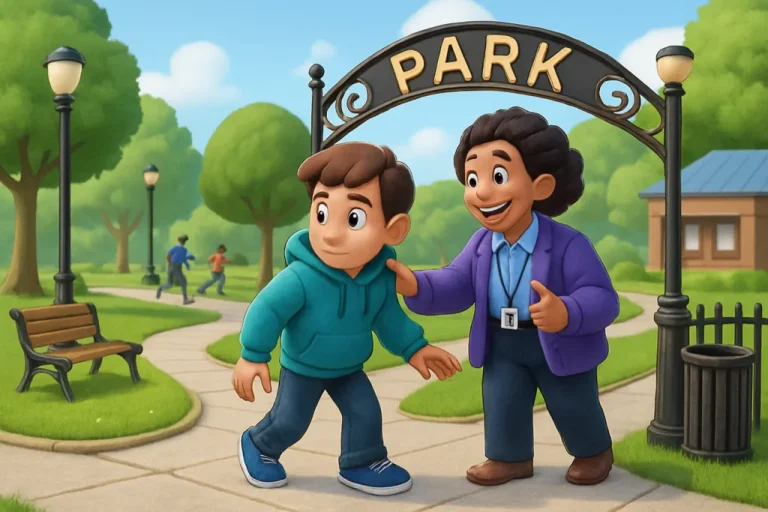What Is BPD Splitting?
Borderline personality disorder (BPD) is a mental health condition, and splitting is a symptom that underlines an unconscious coping or defense mechanism for managing challenging situations. Splitting behaviour interferes with people’s daily lives, relationships, and the person’s sense of well-being.
The splitting behaviour varies between two extremes:
- Devaluation – emphasising the negative qualities of some situation or a specific person
- Idealisation – emphasising the positive attributes of a situation or a person
The emotional conflict people experience during splitting episodes can lead to polarised thinking and behaviour, viewing others as entirely good or entirely evil, right or wrong, rather than as multifaceted individuals with both strengths and challenges. For instance, a person living with Borderline Personality Disorder (BPD) might perceive a friend or family member as a wonderful person one day and as deeply hurtful the next, illustrating key BPD symptoms.
Because of splitting, relationships can become very unstable and reflect a cycle of behaviours:
Idealisation → intense closeness → sudden devaluation → withdrawal or conflict → regret → attempt to repair → repeat
Symptoms of BPD Splitting
The symptoms of BPD Splitting involve intense shifts in emotions and perceptions. For some, a quick alternation between devaluation and idealisation can lead to rapid mood swings, impulsive behaviour and difficulties to manage intense emotions in relationships, particularly.

When someone experiences splitting as part of Borderline Personality Disorder (BPD), the world can feel sharply divided into extremes – people, emotions, and experiences are seen as either completely positive or entirely negative (with no middle ground). This black-and-white perception can shift suddenly, creating emotional instability and turmoil for the person themselves and those around them.
One of the most prominent signs is:
- A sudden change in how someone perceives others.
A person might idealise a friend, partner, or family member, feeling intense admiration, love, and trust. Then, often triggered by a perceived rejection, criticism, or disappointment, that same person may suddenly seem cruel, disloyal, or unworthy of trust, leading to thoughts of self harm . The emotional connection that once felt secure can instantly feel threatening or unsafe. Another symptom involves rapid mood changes tied to these shifts in perception. Feelings of affection can turn into intense anger or despair within hours or even minutes. The emotional intensity is often overwhelming, and the person may not fully understand why they feel so differently or how to regulate the sudden surge of emotions.
Splitting can also distort self-image. Someone may feel confident, capable, and lovable at one moment, then worthless or broken shortly after. This internal conflict creates a fragile sense of identity. It can feel as though the self keeps changing depending on the emotional situation or relationship dynamic. In relationships, splitting can lead to unstable connections and patterns in instability in interpersonal relationships. The person may alternate between clinging tightly to someone out of fear of abandonment and pushing them away to protect themselves from perceived rejection. They might say things in the heat of distress that they later regret, which can add to feelings of guilt and shame once the emotional storm has passed.
During splitting episodes, people often experience intense emotional pain, such as anger, emptiness, confusion, or loneliness. They might feel misunderstood, unheard, or betrayed, even in situations where others don’t intend harm. These strong emotions can also drive impulsive behaviors, such as abruptly ending a relationship, quitting a job, or self-sabotaging opportunities in moments of panic or hopelessness. Afterwards, there’s often a deep sense of regret, sadness, or longing to repair what was said or done during the episode. This can reinforce the emotional cycle of guilt, self-criticism, and renewed fear of rejection.
How Long Does BPD Splitting Last?
The duration period of borderline personality disorder splitting varies and is individual for each person. The splitting episodes can be intense and brief, but they can last from a few minutes to more hours, even days, often impacting therapy sessions. The length of the splitting episode depends on multiple factors, such as the individual’s emotional regulation skills, emotional responses and the triggers present in the situation.
Some people with borderline personality disorder may experience rapid shifts between devaluation and idealisation, which can lead to brief but intense splitting episodes that many with BPD tend to encounter. In contrast, others may have persistent splitting patterns that can last for days or weeks due to ongoing triggers.
BPD Splitting Examples
Splitting isn’t simply “being moody” or “going from liking someone to not liking them”. It’s a persistent pattern of extreme shifts in perception that interfere with stable and healthy relationships and self-image.
Imagine someone with BPD begins a friendship with a colleague. At first, the colleague is kind and helpful, so the person thinks, “This friend totally gets me, they’re amazing, I can trust them completely.” Then the colleague cancels a coffee-catch-up or doesn’t reply quickly. Suddenly, the person thinks, “They don’t care at all. They must hate me. I don’t want anything to do with them.” That shift from idealisation to devaluation is an example of splitting.
Another example, let’s say it is about when a person with BPD splitting behaviour is in a romantic relationship. One day, the partner is being affectionate, and the person thinks, “They’re perfect, this is the relationship I’ve always wanted.” The next day, the partner forgets something minor, maybe misreads a text or doesn’t respond when asked for reassurance, and the person suddenly thinks, “They’re selfish. They don’t love me. I need to end this.” Then maybe later they regret the explosion or the break-up and swing back to “They were wonderful after all.”
While in self-perception, a person with BPD does something minor, maybe makes a mistake at work or says a social awkward thing. One moment they feel capable and strong, and the next moment they view themselves as incompetent, worthless, “a disaster”. The internal sense of self flips from “I’m good” → “I’m bad”, due to black-and-white thinking.
What Causes Splitting?
Medical professionals aren’t entirely sure of the causes of splitting, but evidence shows several risk factors contribute to splitting, such as:
- Family history
- Stress, trauma or childhood abuse
- Invalidating environment during early childhood
Although the exact cause of splitting behaviour remains unknown, it may also be a defense mechanism for managing intense and conflicting emotions.
Impact on Relationships
BPD splitting is known to have a significant impact on relationships, whether those are romantic or non-romantic. The rapidly shifting views of people and situations that come with splitting behaviours create challenges in managing stable relationships.
Some of the ways BPD splitting impacts relationships and leads to self image issues include:
- Communication challenges: People with BPD often struggle to express their emotions in a balanced manner, which makes it challenging for the other person to understand and give an appropriate response.
- Unstable relationships: The shifts in perspective lead to challenging relationships as friends, family members or partners find it difficult to predict the reactions and behaviours of the person with BPD.
- Emotionally exhausted: The surrounding circle of people may experience emotional exhaustion due to the unpredictable nature of the BPD-splitting episodes.
- Frequent breakups and reconciliations: Most romantic relationships are affected by the shifts between devaluation and idealisation. This pattern can be challenging for both parties and lead to frequent breakups and reconciliations.
- Low self-esteem: Being subjected to the rapid shifts of perceptions can negatively impact one’s self-esteem, as people with BPD often question their own worth and identity.
- Isolation: People with BPD splitting often feel alone and isolated, and feel as if others around them do not understand their emotional pain.
Splitting in borderline personality disorder usually reflects intense emotional challenges and requires acceptance, compassion and understanding. For people who experience BPD splitting, creating a caring and supportive environment plays a key role in the recovery process. ss.
Coping Strategies
In BPD, splitting behavior is a defence mechanism that protects the person from emotional pain. This pattern often stems from early attachment trauma, fear of abandonment, and difficulties regulating intense emotions, which can often be addressed through individual therapy. Therapy, especially in the UK, focuses on helping the person integrate these extremes and build a more stable, nuanced understanding of relationships and self.


In the NHS and UK therapeutic frameworks (DBT, MBT, CAT), the therapeutic relationship is at the core.
The therapist models consistency, empathy, and reliability in talk therapy, even when the person’s view of them changes (“you don’t care about me anymore” → “you’re the only one who understands me”).
This helps the person experience stability and trust, gradually teaching their brain that relationships can survive conflict or disappointment.
Learning coping strategies and emotional regulation skills teaches people:
- How to tolerate distress without self-harm or relationship rupture (Distress Tolerance).
- How to identify early emotional cues and ground themselves (Emotion Regulation).
- How to communicate effectively without extremes (Interpersonal Effectiveness).
Over time, this reduces the emotional intensity that fuels splitting, thereby improving overall treatment outcomes.
BPD Support With Unique Community Services
At Unique Community Services, we provide tailored care to every person, putting people’s emotional well-being at the centre of our focus. We embrace people’s differences and unique challenges, focusing on their strengths and abilities. Our incredible support workers create a person-centred care plan tailored to your needs. Our person-centred, professional and humanised support puts people at the heart of everything we do.
If you or someone dear to you experiences BPD challenges, contact us today and let’s co-create a care plan that will reflect the person’s needs.
Our offices are in Manchester and Leeds, and we deliver support across the UK.




